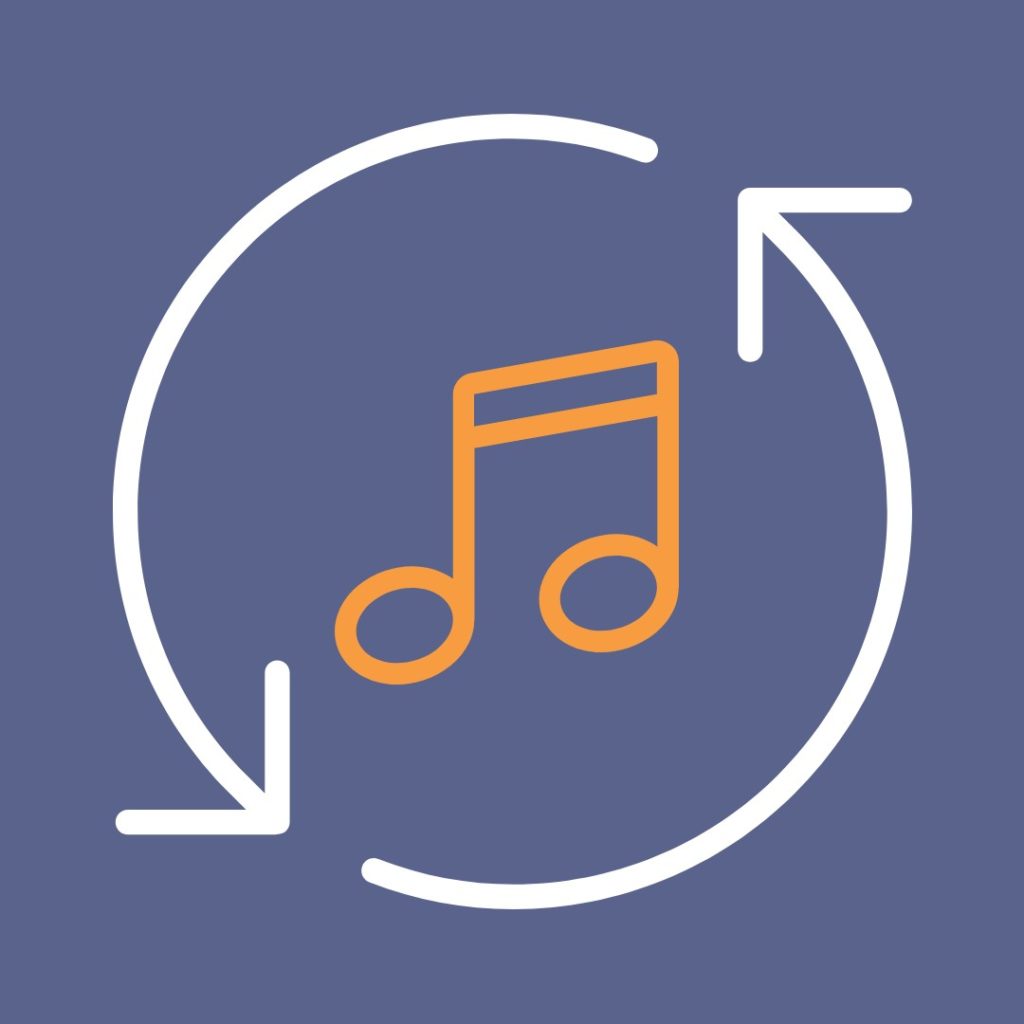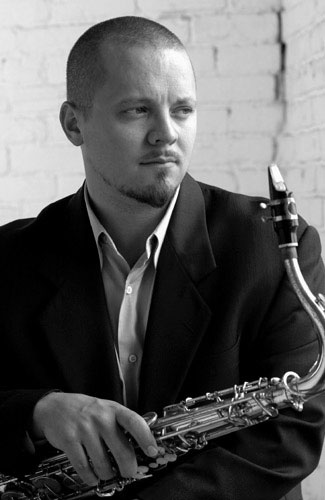https://www.musical-u.com/learn/harnessing-power-voice-sound-therapy/
Sound therapy is a relatively new healing technique that employs the vibrations of the human voice to go beyond relaxation and foster healing. There is no tool more powerful for healing than the human voice… With Constig https://www.musical-u.com/learn/harnessing-power-voice-sound-therapy/
Innovative music educator The Learning Coach – Gregg Good…
https://www.musical-u.com/learn/effective-practice-lessons-from-neuroscience-and-psychology-with-gregg-goodhart/
Innovative music educator The Learning Coach – Gregg Goodhart eschews the idea of “natural talent”; instead, he believes that passion and hard work are at the root of musical learning. Gregg has developed a pragmatic teaching method that emphasizes acquiring talent by repetition and making good use of practice time. https://www.musical-u.com/learn/effective-practice-lessons-from-neuroscience-and-psychology-with-gregg-goodhart/
Learning by Repetition: How Musicians Can Improve with Looping
Getting better at your craft takes time and effort, and we all get stuck in a rut with musicianship at some point. It’s all too easy to get derailed or discouraged by monotony in practice and a lack of inspiration.
A phenomenal way out of this is looping – it will shake things up and put some fun back into your practice routine.
What is looping? Simple: looping is using software or hardware technologies to instantly record and play back sound. Here’s a simple introduction to the concept:
That video is actually showing just one of the many uses of looping; it isn’t necessarily about just recording and performing. It has a myriad of uses that can improve your musicianship, help you honestly critique your own music, and give you those “Eureka!” music moments that you’re looking for.
Here’s a quick guide to just some of the hidden uses of looping.
1. Critical Listening
Nothing gets you better faster than listening to yourself. Loop pedals make it very easy to play and instantly listen back so you can hear where you need to make improvements.
 If you’re working on a difficult passage or improvising through a set of chord changes just stomp the pedal, play/record yourself, stomp it again to play it back, and give yourself a chance to hear exactly how you sound.
If you’re working on a difficult passage or improvising through a set of chord changes just stomp the pedal, play/record yourself, stomp it again to play it back, and give yourself a chance to hear exactly how you sound.
You can hear what you like, if it worked, articulation, phrasing, intonation, timing… everything is there. And you can do it over and over and over.
2. Composing
Loop pedals are excellent tools for creation and arrangement. You can repeat the song (or sections) endlessly while you try out new melodies, harmonies, chord voicings, or chord progressions. You can even experiment with moving sections around and adding harmonies to a verse or chorus.
If you play several instruments, looping will literally enable you to form a band with just yourself. You can arrange the piece in the privacy of your own space, trying out different bass lines or rhythm parts on guitar or keys, and building your song piece-by-piece. The only limit is your imagination.
Looping even enables you to create a multilayered masterpiece with a single instrument! Watch as violinist Tyler Carson creates an epic piece with just an acoustic violin, a horn violin, and some loop pedals:
3. Creative inspiration
One thing that is often overlooked is the importance of just spending time playing your instrument. That’s practice, too. A lot of us are always working on this lick, or these changes, or this song, or whatever. You also need to work on fun. Music, even serious music, should be fun. It’s fun to make music, and it’s even more fun to make good music.
It’s one thing to work on scales, technical exercises, play along with recordings, or just “noodle” around. It’s something else when you use that pedal to record something and start playing along with it. You can play along with yourself in a myriad of ways: harmonize, do contrary motion, layer, and more. If you’re a wind player or vocalist, you can work on long tones and harmonize with yourself.
 Besides giving you some “jam” time, it’s a great way to explore new ideas, try some licks out, make silly noises, and layer sounds together in a way that you might not ever do live. You’ll find that there’s some pretty cool things happening when you do that. You might find an idea for a tune, or a cool sound to use in a solo, or even a part for a song that you’re working on.
Besides giving you some “jam” time, it’s a great way to explore new ideas, try some licks out, make silly noises, and layer sounds together in a way that you might not ever do live. You’ll find that there’s some pretty cool things happening when you do that. You might find an idea for a tune, or a cool sound to use in a solo, or even a part for a song that you’re working on.
If you’re not in the mood to work on something in particular, but you still want to play – plug it in and make some noise. Productivity is far from being the singular end goal in music, and you don’t always have to grind the same stuff in your practice sessions! Loop stations are a great way to put your practice to work into a creative session.
4. Practice for the Real Deal
Another excellent benefit of incorporating a loop station into your practice sessions is it naturally gets you ready for studio recording. Think about it: looping is recording. And if you’re working on it regularly, you can kiss those “studio nerves” goodbye. You’ll be ready to go, because your time, intonation, and execution will be tight. You’ll be used to recording, playback, and evaluating your take; you won’t get freaked out hearing yourself played back for the first time. It won’t be new and you won’t be doing a lot of takes.
When I go into studios and knock out harmony parts, engineers are impressed with how quickly and perfectly I do it. When they ask me how I do it, I let them know I do a ton of looping. It’s literally practicing for studio recording.
5. Ear Training
In addition to being able to harmonize with yourself, you can work on intonation. You can practice playing lines or scales in different intervals like thirds, fifths, and sevenths strictly for intonation.
”Nothing gets you better faster than listening to yourself.”
If you’re messing around with harmonies and chord voicings, the constant playback and experimentation with voices will train your ear to recognize different types of chords, and those progressions you’re working on will be pounded into your subconscious. You’re going to be developing your ear, your songwriting skills, and your improvisational skills at the same time!
I have changed a lot of chord voicings because of these types of exercises. For example, after listening back to a recording, I decided to go away from a triad to doubling the octave and adding a third on top. It’s same amount of voices and the same major/minor quality, but has a very different sound.
Learning Through Looping
We live in a time where there are a lot of tools to help us improve the way we practice music. Looping can help you make the most out of the time you spend making music, by practicing smart. And there no reason why practicing can’t be fun.
Loop stations are excellent practice tools. There are a variety of pedals and programs available for your use – when you’re ready to check these out, here are some of my top picks.
Even if you never do a looping show, you’ll find hours of fun and useful practice are just a stomp pedal away. Visit www.loopinglive.com to learn more about gear, techniques, and innovative use of technology in music.
Whether you’re aiming to train your ears, self-critique your songs, or get yourself ready for an upcoming recording session, looping can get you there – and ensure you have fun doing it!
The post Learning by Repetition: How Musicians Can Improve with Looping appeared first on Musical U.
Like all university degrees, there are going to be some d…
https://www.musical-u.com/learn/5-surprising-drawbacks-to-taking-a-music-degree/
Like all university degrees, there are going to be some disadvantages to taking Music. Here are five surprising drawbacks universities don’t tell you about being a Music major. https://www.musical-u.com/learn/5-surprising-drawbacks-to-taking-a-music-degree/
Have you wished you could sing but never known where to s…
https://www.musical-u.com/learn/how-to-learn-to-sing-a-roadmap/
Have you wished you could sing but never known where to start? Or perhaps you’ve spent hours singing songs you love and wondered why you never seem to improve. Today we’re sharing a new guide that can help you become a great singer, step by step. https://www.musical-u.com/learn/how-to-learn-to-sing-a-roadmap/
Playing Around the Beat: Syncopation
A lot of music is written in 4/4 time, with a steady, on-beat rhythm that supports the song throughout.
A lot of music isn’t. It shuffles, has unexpected rhythmic moments, and seems like the musicians are playing around the beat.
This is called syncopation – a deviation from a regular expected rhythmic pattern. Understanding it and applying it results in intricate, offbeat grooves that add interest to a piece of music.
Before we get to how you can train your ears to recognize syncopation and the ways you can incorporate it into your music, let’s start with the basics…
What is Syncopation?
A Definition of Syncopation: “A deviation from a regular expected rhythmic pattern, often placing stress (through dynamic accents) on weaker beats or omitting stronger beats.”
Dynamic accents are where the stress falls naturally in a rhythm. Take the simple 4/4 count; the typical stress pattern is “1 and 2 and 3 and 4 and”, with the accented beats being the “downbeats”.
Syncopation simply involves shifting these accents to the “weaker” beats, which surprises the ear and readjusts the listener’s sense of on-beat and off-beat. There are multiple ways in which musicians do this, which we will explore shortly. But first…
A Brief History of Syncopation
Though syncopation has been around for eons, it first prominently appeared in the Western world with the arrival of Ars Nova, which saw composers producing rhythmic innovations and quite complex forms of syncopation.
Composers such as Bach, Beethoven, Schubert, and Brahms saw the value in adding this kind of rhythmic interest, and continued to write music with unexpected, “offbeat” rhythms.
Syncopation found a home in countless genres of American music when West African rhythms met the “traditional” European rhythms, resulting in these two rhythmic styles being layered in genres such as ragtime, jazz, blues, and rock.
Why Learn Syncopation?
Beautiful things happen in music when you play off and around the beat. Syncopation is a tool to add interest and groove to your music through rhythm, the same way dissonance adds interest to melody.
In fact, you likely already use syncopation in music: lyrics are nearly always naturally syncopated because of how language and speech work. We don’t naturally speak in an even, robotic manner; words have stressed syllables in different places, and when strung together, interesting stress patterns are created. Understanding syncopation will help you craft music that nicely fits your (likely already syncopated!) lyrics.
You’ll find that a lot of music you love and may want to cover already has syncopation in it! Learning syncopation will enable you to understand the inner workings of your favourite music.
Syncopation is well-worth exploring for anyone hoping to master the concept of rhythm in general. It goes hand-in-hand with polyrhythms, which are very often syncopated, with beats scattered all over the place. If you understand syncopation, you’ll have an easier time wrapping your head around the multiple simultaneous meters of polyrhythms!

The second and third notes of the triplets can be said to be syncopated; they fall outside of the expected “1 and 2 and” beat that the duplets provide.
Types of Syncopation
There are a myriad of ways musicians can emphasize weaker beats or omit stronger beats. Here are some to get you started:
Even Note Syncopation
Typically, beats 1 and 3 are stressed in 4-count time signatures. A pronounced change occurs when beats 2 and 4 are emphasized instead; it results in a more “dance-y” beat, also called a backbeat.
Suspension Syncopation
One way to omit stronger beats is to “mask” them. In suspension syncopation, this is done by hiding the strong beats using a tie, forcing the emphasis to fall on weak beats.

Missed Beat Syncopation
Here, the strong beat is removed entirely, either by inserting a longer note, or replacing the strong beat note with a rest.

Offbeat Syncopation
This can be described as a “shift” in the beat, where the stressed note falls between the normally-stressed beats. This can be created on the level of the beat or the beat division.
Here’s an example of division-level syncopation:

How to Spot and Count a Syncopated Rhythm
You can get an idea of whether a rhythm is syncopated by analyzing the accompanying score, or by simply listening. As mentioned above, syncopation is simply the emphasis of weak beats or the omission of strong beats. Understanding which beats are “strong” and “weak” will enable you to determine whether a beat is syncopated or not, just at a glance.
If a score is not available, your ears are an equally good tool for elucidating syncopated rhythms. Try tapping your foot along to the music you’re listening to, in a way that the taps are evenly spaced (think of a standard 4/4 beat). Now, take note: when are the accented beats/notes falling? Are they in tandem with your foot hitting the floor? Or do they occur when your foot is up in the air?
If the accented beats/notes happen at any point besides the moment your foot hits the floor, it’s very likely you’re listening to a syncopated rhythm.
To further determine exactly which “offbeats” are being emphasized, try counting along with the music. The “1 e and a 2 e and a 3 e and a 4 e and a” counting system is a simple way to count along with a rhythm, taking note of which syllable the accented beat falls on.

Syncopation with Different Instruments
As mentioned above, vocalists have nothing to worry about – they naturally engage in syncopation purely by singing.
As for other instrumentalists, it will take a bit of understanding and training to incorporate syncopation into practice.
The rhythm section is a great place to start with syncopating a song. There are countless syncopated variations on the simple 4/4 kick-snare-kick-snare rhythm that you can create by playing around; try hitting the snare drum off the beat, or omitting a snare entirely here and there. Here is a tutorial that shows how you can play around with kicks and snares to create rhythms with different feels:
Syncopating melodies on the piano or keyboard is a great exercise. Take some cues from jazz pianists on how to displace or “swing” notes in a melody to create an offbeat groove.
For a fun exercise, try arpeggiating simple chords and staggering the notes to fall on offbeats – you’ve just created a syncopated Latin rhythm!
How Do I Learn Syncopation?
Because syncopation is an intermediate rhythmic concept, an understanding of basic rhythmic concepts will be your best friend; familiarize yourself with note values, time signatures, and where strong and weak beats fall in simple time signatures such as 2/2, 2/4, 4/4, 3/4, and 6/8.
This foundation will enable you to pick out exactly which beats are being emphasized in a rhythm. Start off with counting rhythms in simpler time signatures, and work your way up to the more complex ones.
Once you can comfortably spot and count out syncopated rhythms, try creating your own, and putting them to use in your own songwriting!
Counting Your Way to New Rhythms
By shifting, adding, and omitting beats, you can open up a gateway to a whole new way of using rhythm. Start small: try counting out some basic syncopated rhythms, then slowly progress to creating your own.
Ear training is your friend here, and the more syncopation you listen to and count along with, the better you’ll get at picking it out and applying it to your music. With some practice, you’ll be playing and writing music with intricate syncopated grooves before you know it!
Star Wars has been a worldwide pop culture phenomenon and…
https://www.musical-u.com/learn/star-wars-may-the-music-be-with-you/
Star Wars has been a worldwide pop culture phenomenon and holds the Guiness World Record for “most successful film merchandising franchise.” We have collected a selection of the best Star Wars music articles, and videos. https://www.musical-u.com/learn/star-wars-may-the-music-be-with-you/
Playing jazz seems from afar as daunting as it is amazing…
https://www.musical-u.com/learn/jazz-chords-made-easy/
Playing jazz seems from afar as daunting as it is amazing. How could I ever get in on something that… complex? Difficult! I don’t have the time or the talent to ever get to do that! Do I? https://www.musical-u.com/learn/jazz-chords-made-easy/
Do you want to work on a cruise ship? Now, before you rus…
https://www.musical-u.com/learn/cruise-ship-musicians-survival-guide-part-1/
Do you want to work on a cruise ship? Now, before you rush off to sign your contract, consider the Pros and Cons of taking a job as a musician on a cruise ship. https://www.musical-u.com/learn/cruise-ship-musicians-survival-guide-part-1/
What could possibly be exciting about memorizing 15 key s…
https://www.musical-u.com/learn/the-secret-to-mastering-music-theory-with-shranny/
What could possibly be exciting about memorizing 15 key signatures? And scales, scales, scales! What if there was just one place, one rule that ruled them all, one secret to understanding all the key signatures, chords, chord progressions—even those awful, endless scales? https://www.musical-u.com/learn/the-secret-to-mastering-music-theory-with-shranny/
